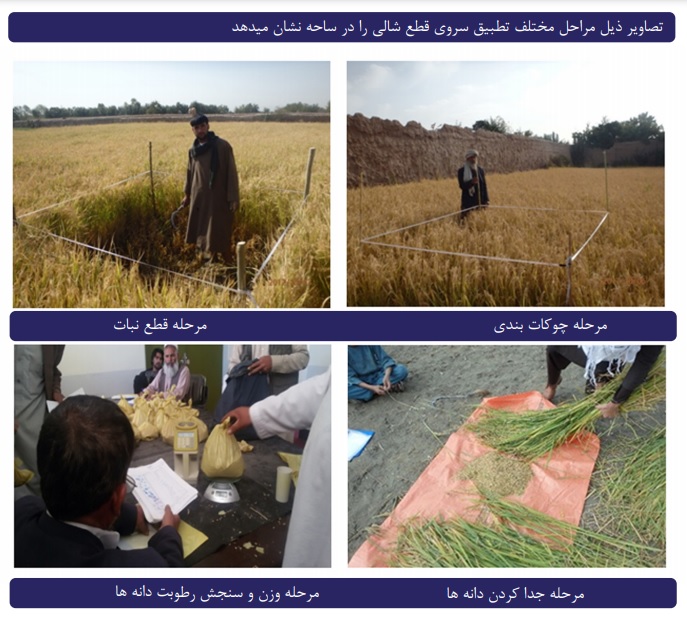Rice planting and Yields increased by 15% in 1399 compared to 1398

Jadi 9: December 29, 2020
The Ministry of Agriculture, Irrigation and Livestock (MAIL) and National Statistics and Information Authority have prepared a joint report entitled "Rice Production Report for 1399" using special statistics that show that Rice planting and Yields increased by 15% in 1399 compared to 1398.
Rice yields were 383,000 metric tons last year, but according to new surveys, this year, they have been increased by 57,000 tons to 440,000 metric tons.
Similarly, 128,000 hectares paddy fields were reported in the country last year while according to a new survey, this year, paddy fields increased by 19.5 thousand hectares to 147.5 thousand hectares.
The survey was conducted in several ways, including remote sensing of paddy fields in 126 districts of 19 provinces, interviews with farmers and cutting of paddy crops, and sampling of crops.
The census covers the entire time of planting and harvesting rice, which is about five months.
About 15% increase in rice yields in 1399 compared to 1398, while rice is one of the major uses of the citizens of Afghanistan and its use is widespread.
According to the joint survey of the Ministry of Agriculture (MAIL) and National Statistics Office, Kunduz, with 46.8 thousand hectares of paddy fields and 140,000 metric tons of rice, ranked first in rice-producing provinces.
Takhar with 23,000 hectares of paddy field and production of 75,000 tons, second place, Baghlan with 19.7 thousand hectares of paddy field and production of 63,000 tons, third place and Nangarhar with 14.6 thousand hectares of paddy field and production of 47,000 tons of rice Is fourth.
Herat with a production of 28,000 tons, Kunar with a production of 20,000 tons, Balkh with a production of 18,000 tons and Laghman with a production of 15,000 tons are in the next positions. Khost, Uruzgan, Paktia, Badakhshan, Daikundi, Kabul, Badghis, Helmand, Bamyan, Sar-e Pol and Ghor are the next rice producing provinces in the country.
It should be said that the construction of irrigation networks, the launch of educational programs, the establishment of paddy farms and the assistance of paddy farmers by the Ministry of Agriculture, has led to an increase in cultivation and has also increased rice production among farmers.
According to the conjecture of National Statistics and Information Office, Afghanistan's need for rice in 1399 is 655 thousand tons, which according to the amount of production, there is a shortage of 215 thousand tons.